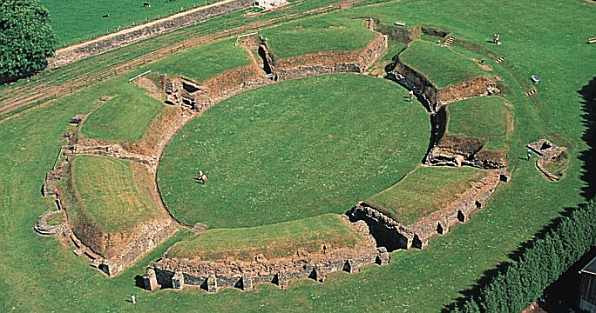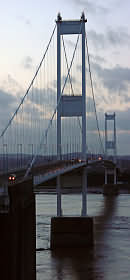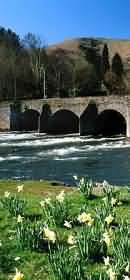
The Local Time is Saturday, 27-Jul-2024 12:20:16 CEST
Caerleon Tourist Information and Travel Guide |
|
|||
| YOU ARE HERE: Main Home Page > Monmouthshire > Caerleon |
|
|
Caerleon Tour and Tourist Information GuideCaerleon, the ancient Roman Military Fortress of Isca, later the supposed court of the legendary King Arthur. Founded about 74 AD where the Second Augustan Legion encamped beside the River Usk in a strategic position, surrounded by sheltering hills and a wide sweep of navigable river. The fortress took its name from the river, known by the Celts as Yr Wysg. |
|||||
 |
|||||
| A visit to Caerleon is fascinating and rewarding, but is easily arranged for the town lies on the River Usk just three miles from Newport and only a little way from Junction 25 of the M4 motorway. There are excellent road and rail links from Newport to all pats of the country. A regular and frequent bus service (Numbers 2 or 7) from Newport Bus Station takes the visitor to Caerleon Post Office. A walk around the town will bring surprises and perhaps some disappointments, for the town has suffered the ravages of time and has been sacked by Danes, Vikings, Saxons and Welsh. Following the Roman withdrawal, Caerleon maintained its importance as a seat of the Welsh Princes, and as a trading and industrial centre to the end of the Nineteenth Century. It is still a town of personality and charm, containing much that is worthy of preservation. Today Caerleon is an attractive historic town with a selection of pubs, restaurants and tea rooms. The Ffwrwm Arts and Crafts Centre has an amazing sculpture garden and craft shops as well as an art gallery. Caerleon - the ' fortress of the Legion' - was one of the most important military sites in Britain under the Roman Empire. It was the home of the 2nd Augustan Legion housing 6,000 soldiers and horsemen, with an amphitheatre, baths, shops and temples. Today Caerleon is an attractive historic town with a selection of pubs, restaurants and tea rooms. Aspects of Roman history are brought to life at the imaginatively displayed Fortress Baths (once a giant 'leisure centre' with heated changing rooms), a swimming pool, a huge gymnasium and bath halls. The Roman Legionary Museum graphically portrays the daily life of the garrison with life-size models and an exciting 'hands on' area for children. The amphitheatre and barracks - currently the only Roman barracks block visible in Europe - are open free to the public all year round. Caerleon is also the setting for unique art and craft centre, Ffwrwm, and artwork can be admired around the town on the Caerleon sculpture trail, featuring sculptures from a range of artists from several countries.Visit the Caerleon Arts Website for further information on the sculpture trail, and the up-and-coming Caerleon arts festival.When the Romans finally left Britain (380 AD?), it is thought that they pulled most of the town down. But, I suspect it was left for the remaining Britons (who were by then Romano British), as a strong hold against the raiding Irish and Saxons. Later this town was to feature very heavily in the tales of Arthur Pendragon, and his warriors. One theory is that, seeing this strong hold in decay, Arthur decided he would use it for his new army. There is some evidence to back this up in Celtic sources, such as Bede and Gildas. The Black book of Camarthen also mentions Caerleon as Arthur's Stronghold. There is also the fact that the Roman Amphitheatre was called the 'Round Table', up until the time that it was excavated in the in 1926. Could Caerleon be the fabled Camelot? |
|||||
|
|||||
| BACK TO TOP | |||||
|
|||||
Caerleon Tourist Information and Travel Guide |
|||||
| This page last modified Tuesday, 28-May-2019 11:02:40 CEST | |||||

